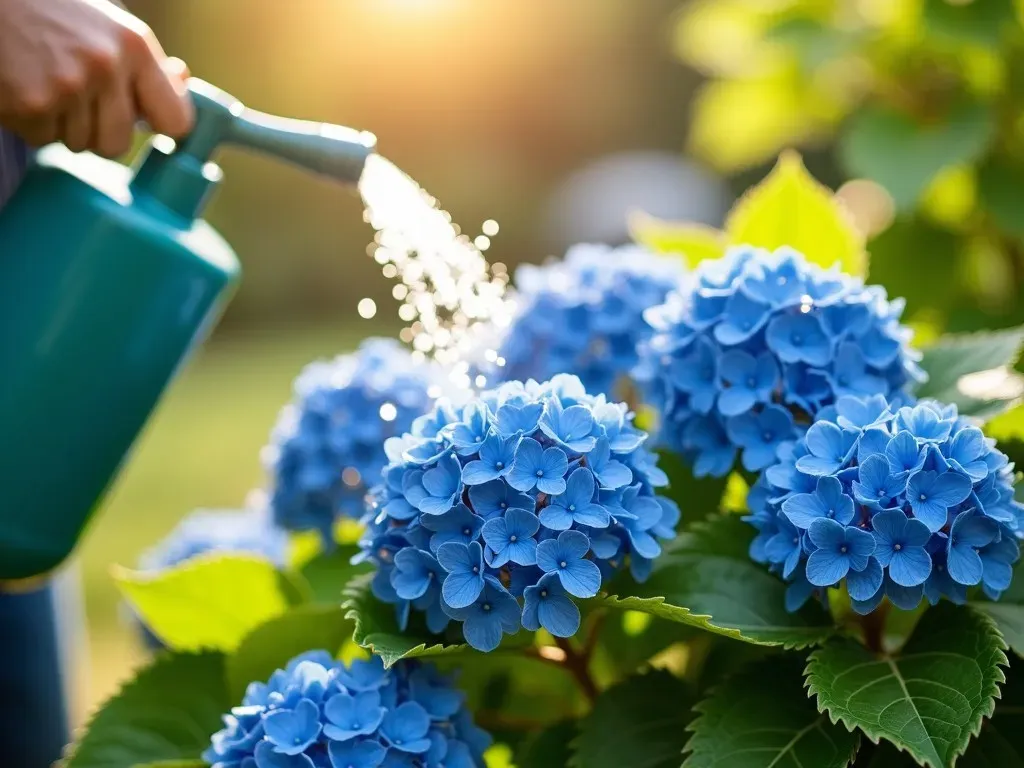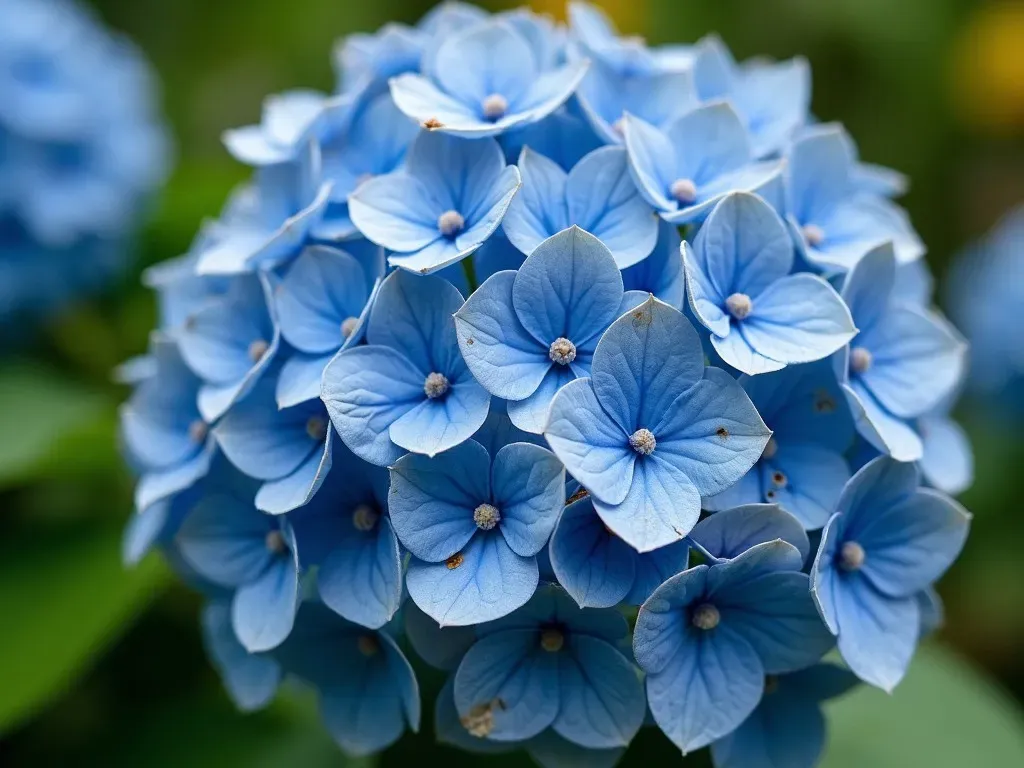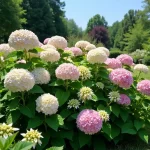The blue hydrangea bush, known for its abundant, vibrant blooms, is a stunning addition to any garden. Among the popular varieties, the Nikko Blue hydrangea stands out with its large, mophead flowers that can transform any landscape into a serene oasis. The blue hydrangea plant thrives in various conditions, making it a favorite among gardeners looking to add color and texture to their outdoor spaces.
Understanding blue hydrangeas
Blue hydrangeas belong to the hydrangea macrophylla species and are recognized for their striking blue blossoms that add a pop of color to gardens from late spring to fall. The flowers can vary in shade from soft baby blue to deep navy, depending on soil pH and composition.
pH and Color
The unique ability of blue hydrangeas to change color is largely dictated by soil acidity. When the soil is acidic (pH below 6.0), the plant produces blue flowers. If the soil is alkaline (pH above 6.0), flowers may turn pink or lavender. This adaptability makes blue hydrangeas an interesting and engaging plant for gardeners willing to manage soil conditions.
Soil pH Chart for Hydrangea Color:
| Soil pH Range | Flower Color |
|---|---|
| Below 5.0 | Deep Blue |
| 5.0 – 6.0 | Bright Blue |
| 6.1 – 7.0 | Lavender Pink |
| Above 7.0 | Pink |
Optimal Growing Conditions
Blue hydrangeas prefer well-draining, moisture-retentive soil enriched with organic matter. The following are essential growth conditions to keep in mind:
Sunlight Requirements
- Full Sun: Some varieties of blue hydrangeas can thrive in full sun but will require sufficient water to prevent wilting.
- Partial Shade: Most blue hydrangeas, particularly the Nikko Blue, flourish in partial shade, especially in hotter climates where they benefit from protection during the hottest part of the day.
Watering Needs
Watering is crucial, particularly during dry spells. Providing consistent moisture helps maintain the plant’s health and supports blooming.
Here is a simple checklist for watering blue hydrangeas:
- Water deeply during dry spells.
- Water when the top inch of soil feels dry to the touch.
- Do not over-water, as soggy soil can lead to root rot.

Soil Enrichment
Incorporating organic matter, such as compost or well-rotted leaf mold, improves soil structure and provides essential nutrients.
Recommended Soil Amendments:
- Compost
- Peat Moss
- Well-Rotted manure
- Pine needles (to increase acidity)
Popular Blue Hydrangea Varieties
Many varieties of blue hydrangeas are available, each offering unique hues and growth habits. Here’s a list of some popular blue hydrangea varieties:
| Variety Name | Flower Type | Growth Size | Notable Features |
|---|---|---|---|
| Nikko Blue | Mophead | Up to 6 feet tall | Blooms early and often |
| Endless Summer | Mophead / Lacecap | Up to 3-5 feet tall | Repeat blooms throughout the summer |
| Blue Wave | Mophead | 3-4 feet tall | Rich blue flowers with a strong scent |
| Twist-n-Shout | Lacecap | 3-4 feet tall | Unique, lacy blossoms and compact height |
| Big Daddy | Mophead | Up to 4 feet tall | Large, showy blooms, good for borders |
For more detailed information on hydrangea varieties, you can refer to Epic Gardening.
Fertilizing Blue Hydrangeas
Fertilizing blue hydrangeas appropriately can enhance their bloom. A balanced, slow-release fertilizer formulated for flowering shrubs is ideal.
Fertilizing Guide:
- Early Spring: Use a balanced fertilizer for new growth.
- Early Summer: Apply a bloom booster to promote flowering.
- Late Summer: Avoid fertilizing to allow the plants to prepare for dormancy.
Tips for Maintaining Blue Color
If you wish to keep your blue hydrangeas blue, consider the following tips:
- Test soil pH regularly.
- Amend with sulfur or aluminum sulfate to maintain acidity.
- Avoid adding lime, as it raises soil pH and could change bloom color.
Frequently Asked Questions (FAQ)
How long does it take for a blue hydrangea bush to bloom?
Blue hydrangeas typically bloom in late spring to early summer, and the flowering season can last until the fall. Depending on the variety and growing conditions, you can expect blooms for several months.
Can blue hydrangeas survive winter?
Yes! Most blue hydrangea varieties are hardy in USDA zones 5 to 9. Proper winter mulching can protect the roots during colder months. However, extreme cold may affect the blooms, especially in the first year post-planting.
How do I propagate blue hydrangeas?
Blue hydrangeas can be propagated through cuttings or layering:
- Cuttings: Take 4-6 inch cuttings in early summer and plant them in well-drained soil.
- Layering: Bend a lower branch to the ground and cover it lightly with soil; roots will form over time.
What pests and diseases should I look for?
Common pests include aphids and spider mites, while root rot and powdery mildew can be issues in overly wet conditions. Regularly inspect your hydrangeas for pests, and ensure good drainage to prevent disease.

Incorporating a blue hydrangea bush into your garden not only enhances its aesthetic appeal but also provides a canvas for enjoying vibrant seasonal changes. With the right care and maintenance, you can cultivate a resilient and enchanting blue hydrangea that attracts admirers for years to come.


